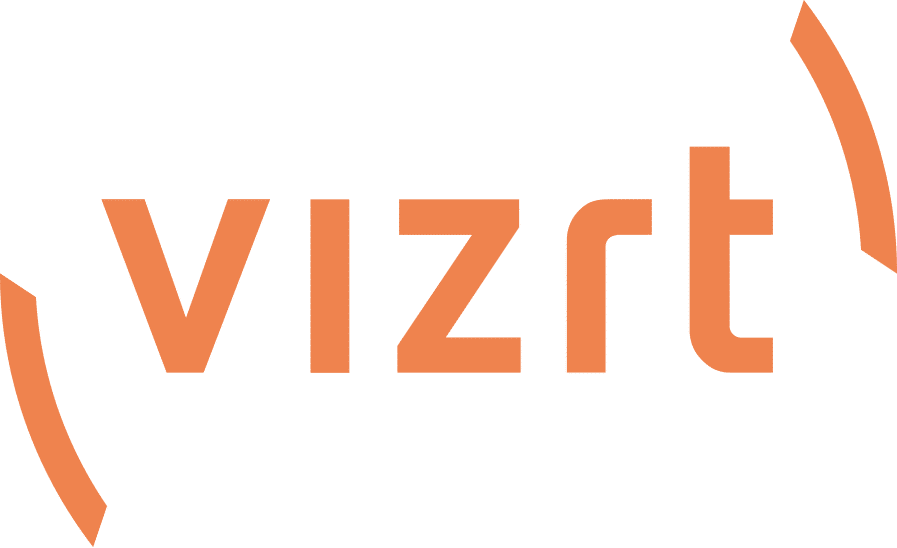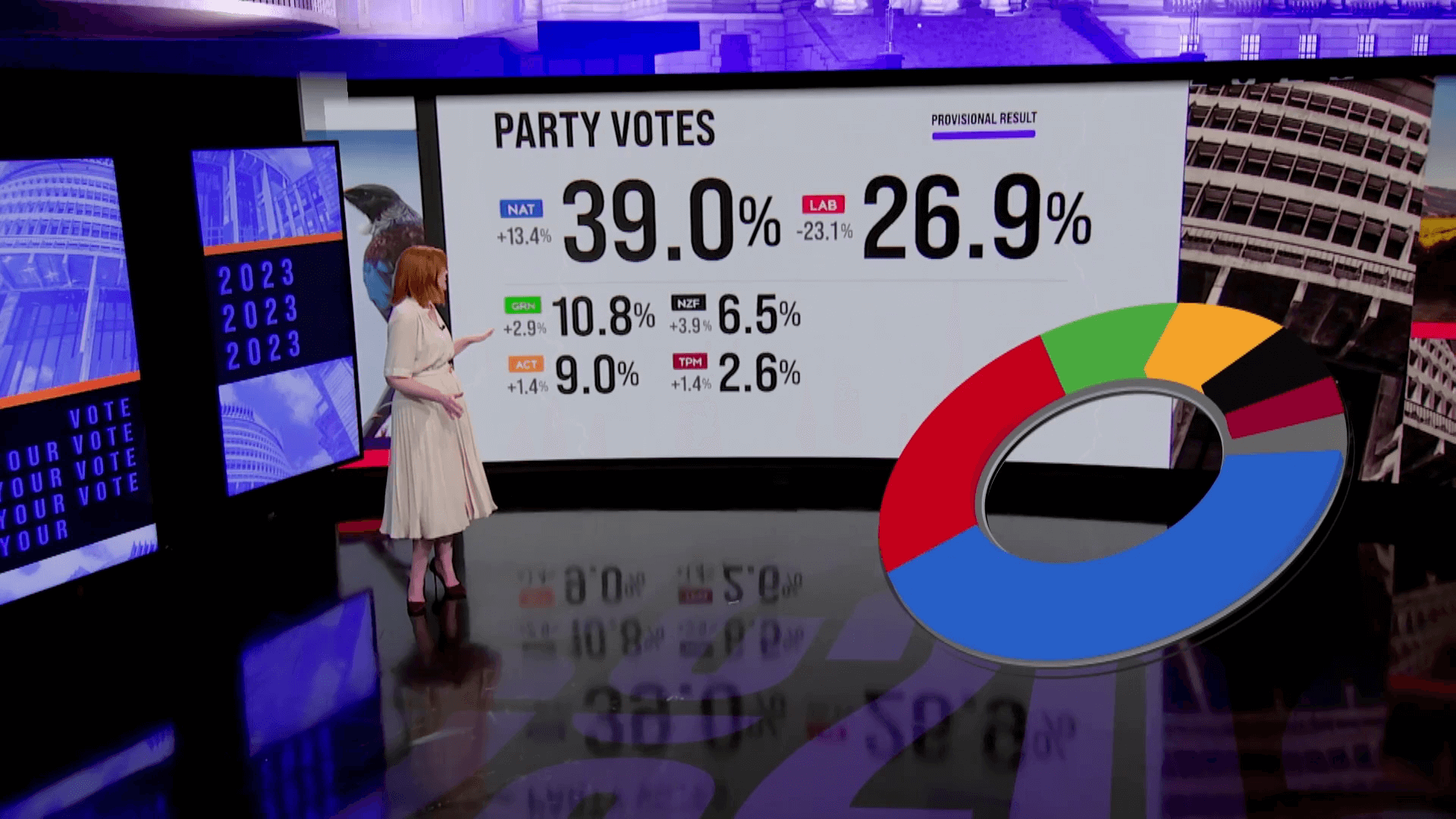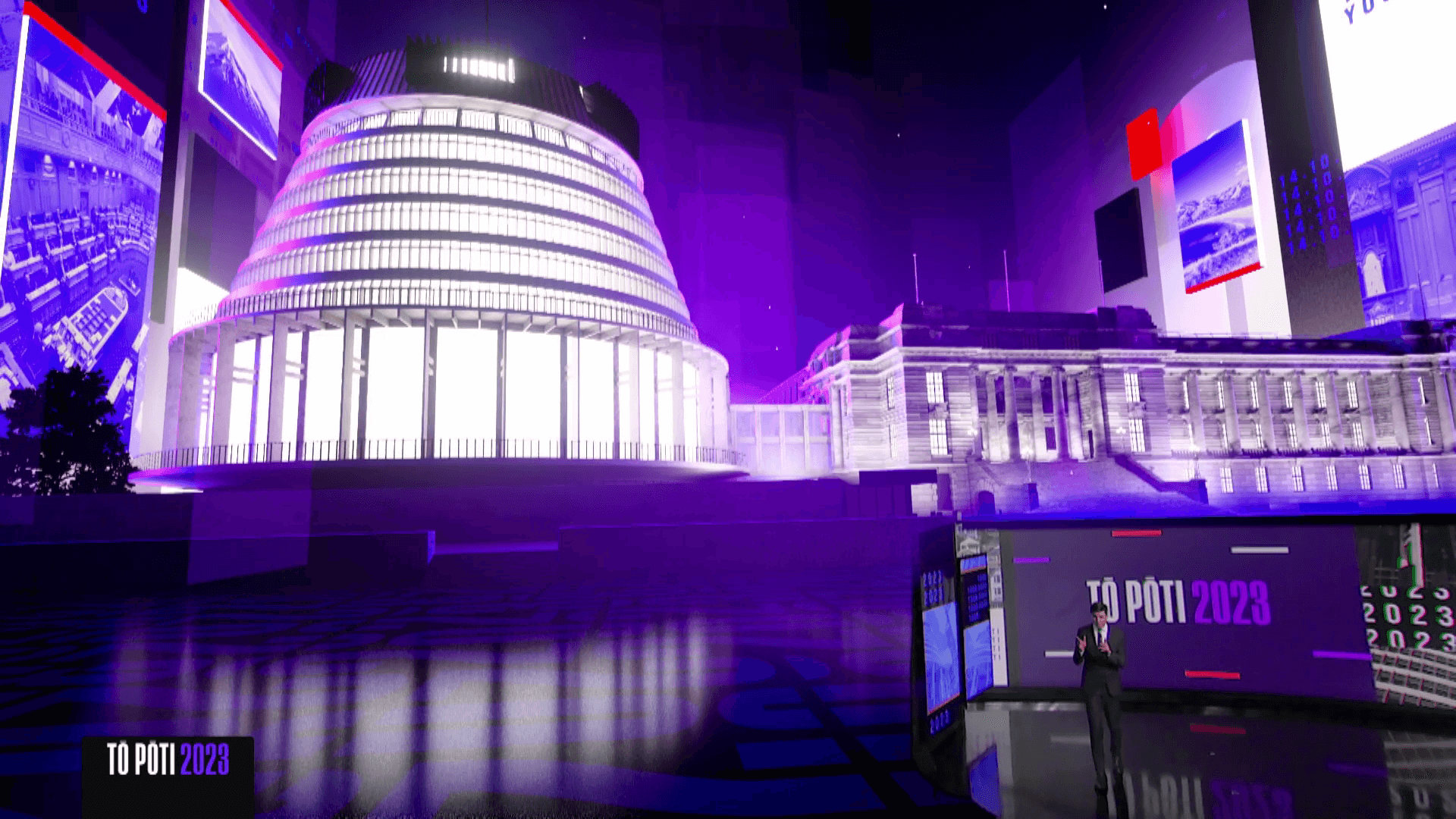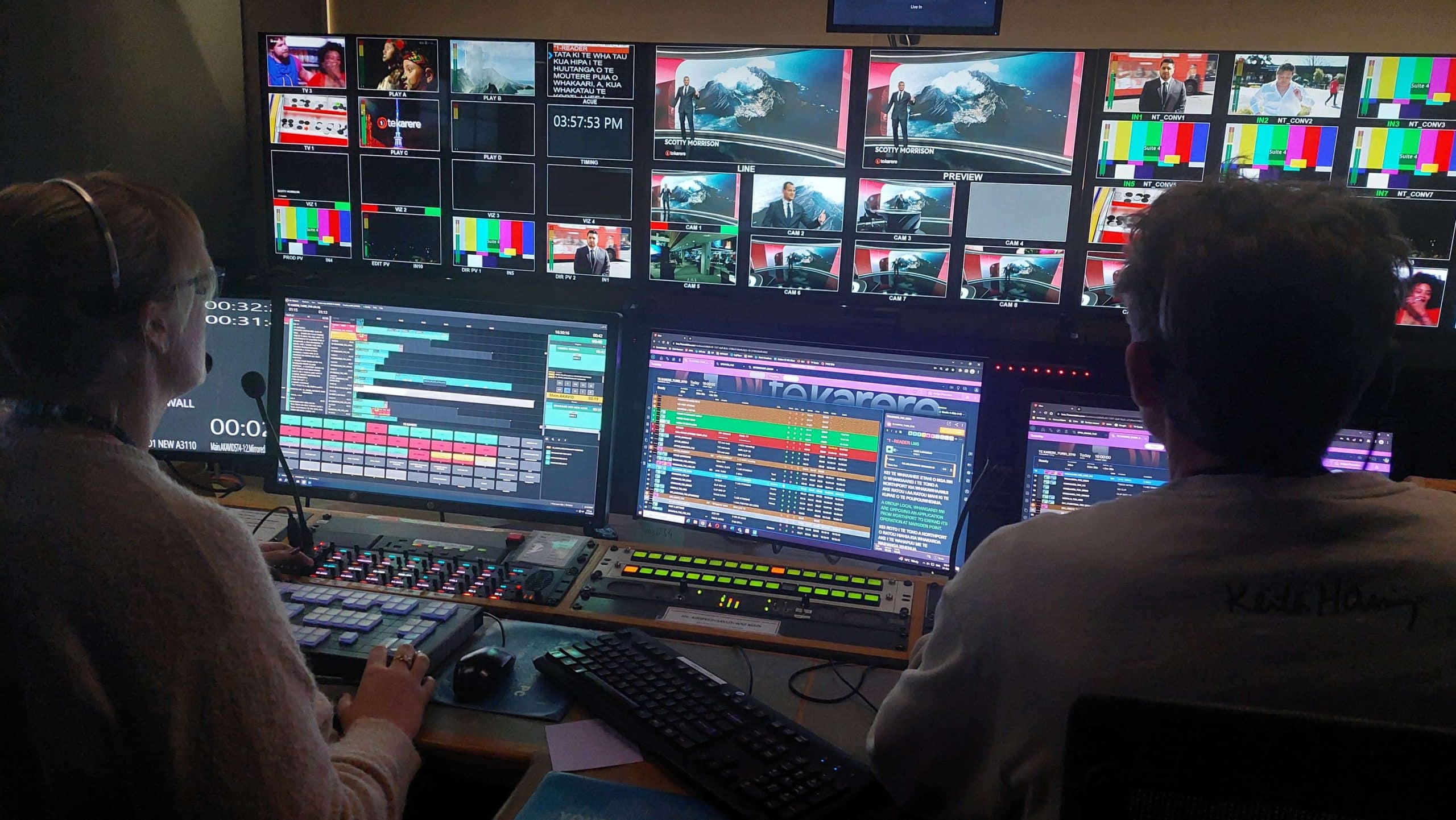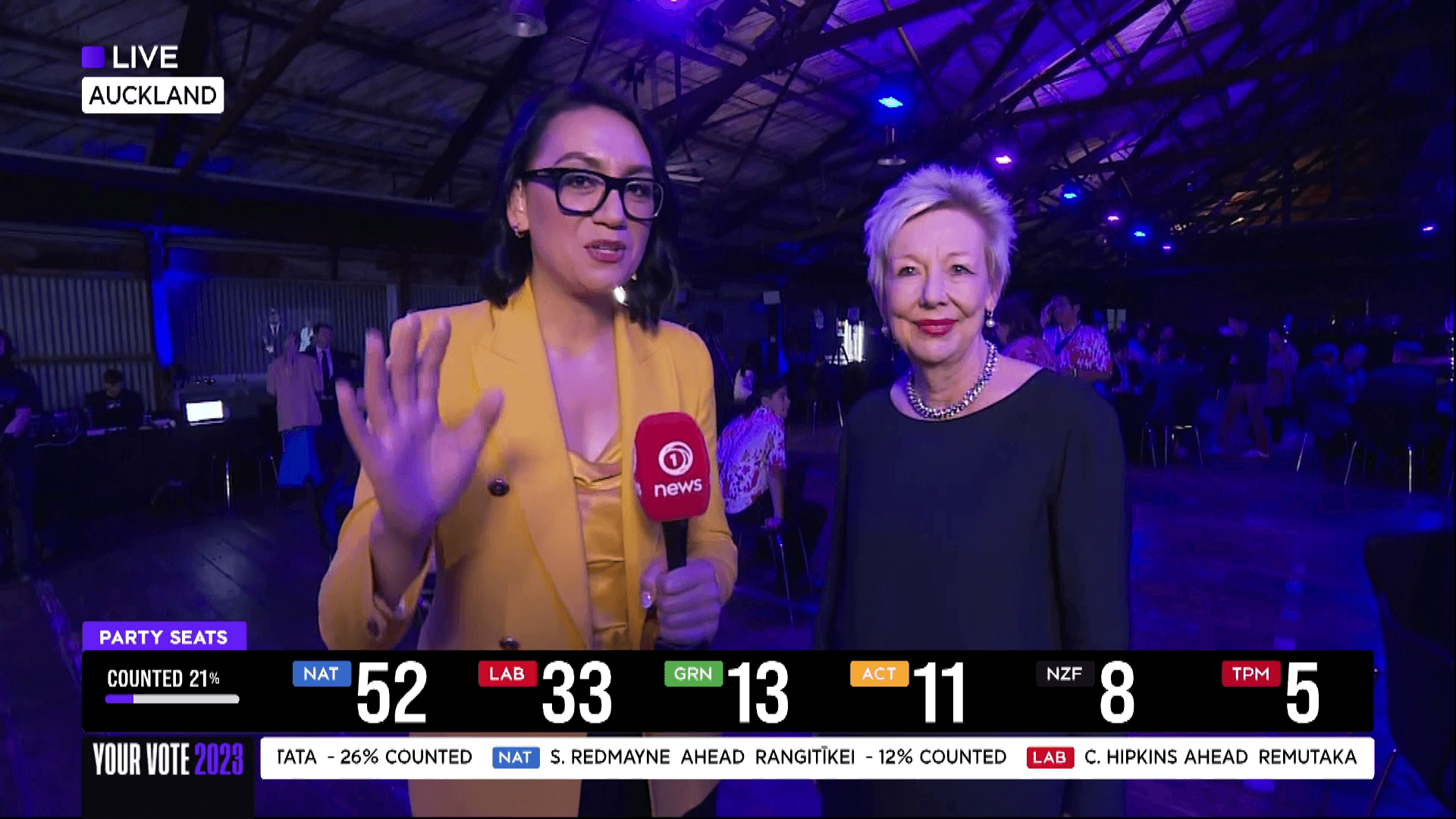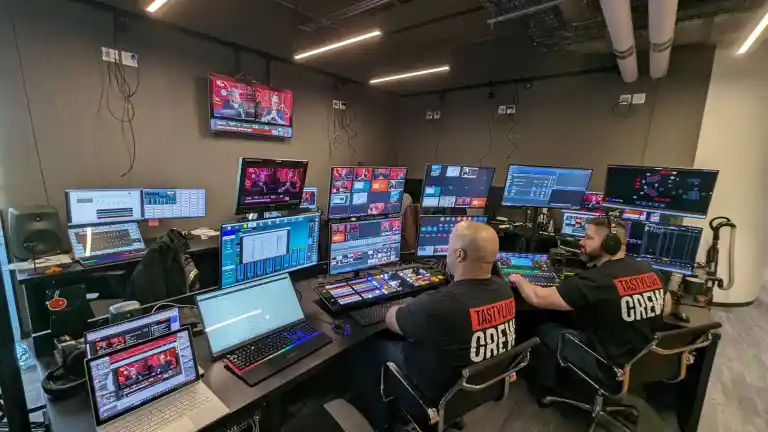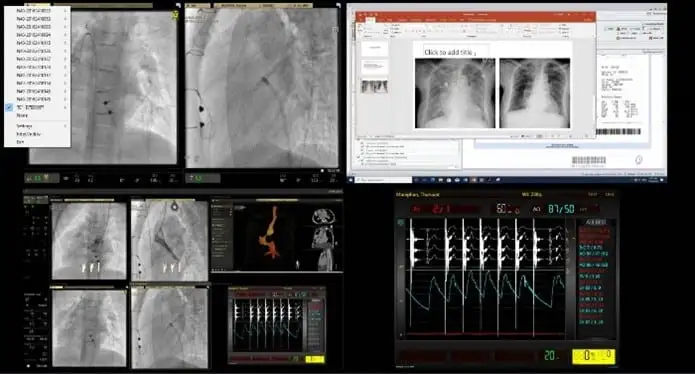How TVNZ produced its most-watched election ever
TVNZ brought its 2023 election to life with data-driven 3D and augmented reality graphics powered by Vizrt technologies
A whopping 1.4 million viewers – over 40% of the 3.5 million registered voters in New Zealand – tuned in to watch TVNZ’s coverage of the general election held in October 2023.
According to reports, the network’s 1News elections coverage was New Zealand’s highest-reaching and highest-rating TV program of the night in both key commercial demographics and total audience. The network also scored big online, with the live stream on TVNZ+ generating more than a quarter of a million (268,378 to be exact) streams, helping the platform deliver its single biggest day in its history.
For TVNZ, this huge success was the culmination of more than a year of planning and putting its election machinery into motion. Beginning in August 2022, up to 280 people – including 60 journalists – were involved in the election process to produce the debates and the main election coverage across broadcast, digital, and social platforms.
“Election coverage for TVNZ is one of those big signature pieces that we do every three years, so it’s important that we get that right for our viewers,” asserts Lindsay Chalmers, General Manager for Enterprise Operations at TVNZ.
“Sports have major events like the Olympics, the World Cup, the Super Bowl… for news, it’s the elections,” concurs Design Lead, Mark Fleming. “There’s not much that would compare in terms of reach or engagement.”
TVNZ has been a part of life in New Zealand for almost 60 years, and its 1News at 6pm bulletin is the nation’s most trusted and watched News program.
“As the national broadcaster, elections are part of TVNZ’s DNA”, explains Jean-Louis “JL” Açafrão, General Manager of Technology at TVNZ. “We’ve covered every election since our inception, and it’s something that TVNZ really prides itself on delivering.”
In recent years, the broadcaster has faced challenges from social media and online news sources – just like its global media counterparts, with studies finding younger viewers moving away from traditional media.
Keeping viewers informed and engaged with stunning visuals
For TVNZ, combatting these challenges meant rethinking content and more importantly, delivery, to better connect its audience to important issues such as the general elections, however they chose to engage.
“It’s important, ultimately, for our democratic process that we’re transparent and able to provide information so people can make the right choices for themselves ahead of the election and then be informed on the day about how those results played out,” adds Chalmers. “So, it’s a data and therefore graphic-driven show on election night.”
Graphics are central to helping break down the elections for viewers. Visualizing the shifts in vote counting and percentages of seats won via graphics makes it easy for TVNZ to explain how the elections are shaping up for each demographic on the big day. This is supported by Vizrt’s research which showed that 43% of respondents believed graphics make it easier to understand content.
Powered by Viz Engine and Unreal Engine, stunning 3D and augmented reality (AR) graphics were brought to life in the main studio with a large 13-meter LED screen covering much of the studio’s 25-meter length, augmented by a green screen setup that provided a “set extension” and allowed TVNZ to seamlessly project an expansion of its virtual set design.
The election coverage offers TVNZ the opportunity to set a new benchmark moving forward, as Fleming explains: “This is our third election cycle of using Vizrt to drive data graphics. We can crunch and visualize a lot of data very quickly. We use elections to set the standard of where we want our graphics, design, and augmented reality capability to be for the next one, two, or three years”.
Attracting and retaining audiences with augmented reality graphics
Augmented reality graphics not only make it easier for viewers to understand complex coverage; they keep them watching for longer and make viewers more likely to return, too, particularly for Gen Z and Millennial audiences. Vizrt’s survey confirmed that 62% of respondents said that graphics and virtual elements make them feel more immersed in the content, 51% said they make them watch for longer, and 23% said they make them more likely to watch that broadcaster again in the future.
“The premise of introducing augmented reality to TVNZ was based on extending the minutes spent watching by our viewers”, says Chalmers. “Every minute spent viewing is really valuable to a broadcaster; it means that you might carry them into the next commercial break or hold them into the next story, which then takes them further as well.
“We were looking for two, or maybe really optimistically, three extra minutes spent viewing each break in a news bulletin. Within the first two months, we got to three and a half extra minutes based on the measurements that we were doing.”
TVNZ’s newsroom workflow
A Vizrt customer for over a decade, TVNZ relies on a suite of Vizrt products for its day-to-day news workflows and election coverage. While stunning graphics steal the show visually, the behind-the-scenes journalist tools, media asset management workflows, and studio automation workflows are equally important in preparing for and executing day-to-day coverage and major events.
Integrating real-time data into TVNZ’s graphics
With Viz Pilot Edge supporting scripting and direct data integration into templated graphics, live data can be immediately visualized in fast-moving stories like election reporting.
TVNZ, however, relied on a bespoke data integration app to handle the live data changes from the Election Commission, while the editorial team used Viz Pilot Edge to seamlessly update the templated graphics as needed, such as updating candidates’ names, changing keys, baselines, lower thirds, and other text updates throughout the night.
The designers created scenes using Viz Artist that are incorporated into the template authoring tool, Template Builder.
Fleming explains that“it’s accessible and easy to use, so we’re able to give it to different graphic designers, and they’re able to quite quickly learn how they need to be building graphics, building templates to make it usable by the newsroom, and also to integrate data.”
“We’ve been using templated graphics in our newsroom since 2016; it was a game changer for our newsroom,” explains Chalmers. Prior to introducing Viz Pilot Edge, any graphic change had to be done by someone other than the reporter or producer producing the story, creating a slowdown and the risk of incurring errors.
“Templated graphics are now well embedded within our newsroom.”
Automating the election control room with Viz Mosart
To help production teams focus on the stories they’re telling, TVNZ opted to implement the Viz Mosart studio automation solution several years ago. Viz Mosart now drives the main news studio and automates nearly seven hours of live, linear news per day.
“It runs pretty much everything, really; the sound desk, the cameras, camera positions, the vision switching desk. And coupled with Dina, our newsroom system, will also drive graphics within the stories themselves,” Chalmers explains.
The drive to implement Viz Mosart was two-fold; reducing operational costs, and producing more consistent, better-quality shows. And this was evident on election night, with perfectly produced coverage wowing the nation.
“Introducing Viz Mosart was a no-brainer from a benefits perspective”, says Chalmers. “We went from a traditional control room of around nine to a control room of about five people. And for our smaller, very streamlined shows, just two.”
“The other benefit is that we’re more accurate; cuts are cleaner, and they happen when they’re meant to. You don’t get double cutting, because automation is never going to do that. We have cleaner and better-timed shows under automation.”
Re-purposing archive content to build election stories
Reliable media asset management workflows and easy content retrieval are key to telling everyday news stories, and even more so for major events such as elections.
“We empower our journalists to do as much of the work themselves without having to go to an archivist”, explains Açafrão. “The ability to search and to pull back content is important. Viz One [media asset management] is a key function for our journalism teams.”
To illustrate the vital role Viz One plays in TVNZ’s newsroom workflows with reference to the election coverage, Chalmers details how:“Throughout roughly a six-week cycle, we have reporters in the field every single day following politicians, following leaders. All that content comes back to base and gets put through Viz One so it can be immediately accessible by the newsroom. We’ve got a very busy archive team making sure that all of it is researchable and accessible by producers and reporters directly at their desktops.”
Following the completion in 2017 of a project to digitize TVNZ’s legacy tape-based news content to file format and another project to migrate the entire archive to the cloud (Amazon Web Service (AWS)), Viz One looks after TVNZ’s vast archive of around five petabytes of storage, giving journalists easy access to over a million unique assets spanning current content and decades of archived content. It also looks after vital media workflows, such as metadata logging, soft parting for ad breaks, multi-language subtitling, quality control processes, and more.
TVNZ’s future vision
Chalmers is proud of what TVNZ’s 1News has achieved in recent years and believes the way forward is to introduce even more segmented options for personalized material, with content tailored around the on-demand premise.
Supporting the idea that the future of newsroom coverage heavily involves the digital space, Açafrão explains: “Linear will always be our bread and butter, and our biggest audiences. But increasingly we’re starting to see the younger viewers coming through on other channels; we’ve got to be where the eyeballs are.”
“The tools and the architectures behind Vizrt tools really enable us to unlock that transformation process in a way that doesn’t lock us into using those tools exclusively. What was compelling for us was Vizrt’s open API architectures and the partnerships that they’ve developed for some of our other key technologies, such as AWS [for Viz One archive storage] and Avid. There is a lot of interplay between Vizrt and all our other key systems”.
When asked whether there are plans to migrate other tools and workflows to the cloud, Açafrão confidently asserts: “Yes, all of them! A lot of broadcast technology is maturing to the level where cloud is becoming an option for a lot of what we consider to be traditional on-premises activities.”
The team at TVNZ is confident they’ve made the right choice for the broadcast technology they rely on every day and for major events, starting back in 2011. “Vizrt has been known for many years now as bringing world-leading graphics to market. I believe that’s true”, says Chalmers.
“Certainly, from an empowerment perspective, the tools really work and give us an edge. Being as contemporary as you can be with the storytelling but also how you visually represent things like 3D and augmented reality graphics is super critical in appealing to the widest possible audience,” Chalmers concludes.
